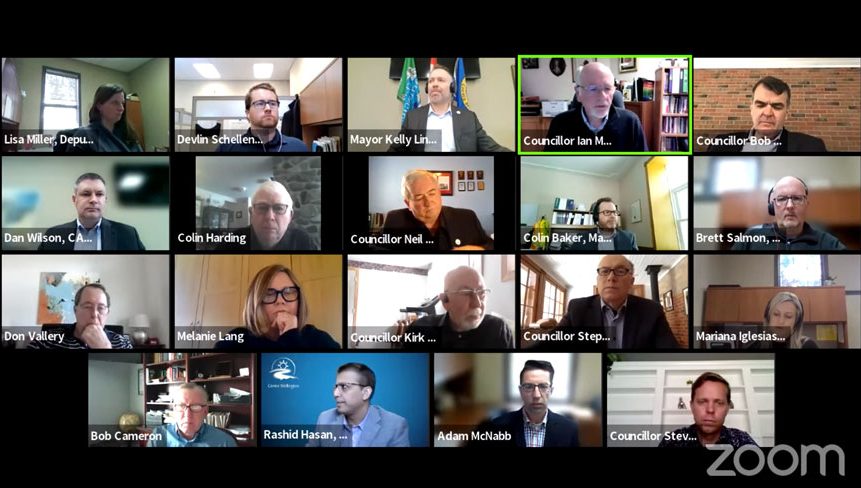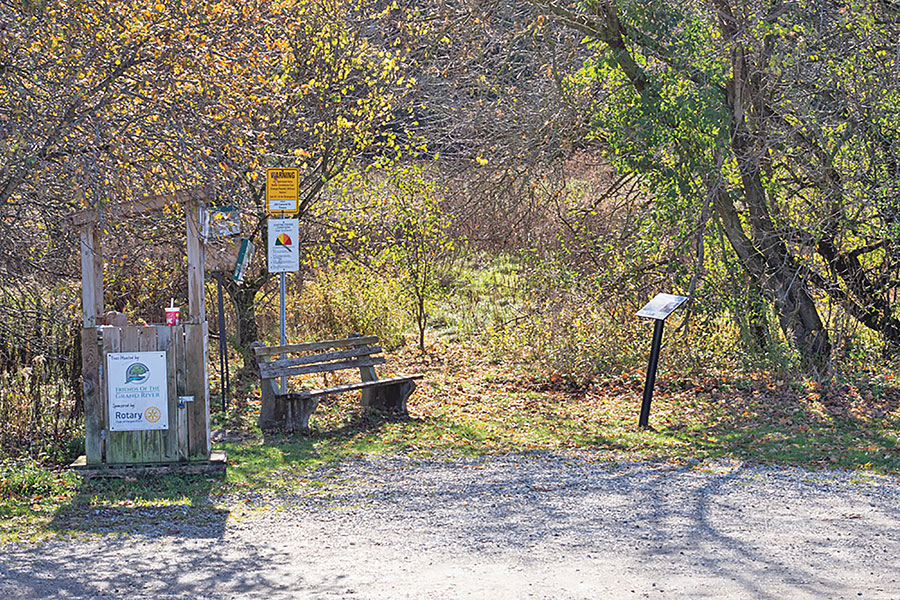CENTRE WELLINGTON – While council did not approve councillor Stephan Kitras’ motion regarding Pierpoint Park, it did approve a plan that could see the park designated as a cultural heritage landscape in the township.
Council heard about Pierpoint Park three times during its March 28 meeting.
President Denise Francis and executive director Kween of the Guelph Black Heritage Society (GBHS) delegated to council in support of Kitras’ motion.
Kween spoke about the shabby condition of the property that was once the homestead of Richard Pierpoint, the founder of the first Black settlement in Wellington County.
“It’s a poorly maintained area that doesn’t meet the park definition,” said Kween. “And at the site, you are sadly greeted by a plaque on a wobbly post. We need to preserve the land now.”
Francis said GBHS has been conducting research of Black settlers in the county and has partnered with the University of Guelph on a mapping project that will guide visitors to the homesteads, churches and businesses of Black settlers in the 1800s.
Pierpoint Park should be on that map, she said, and could become a tourist destination if it is properly preserved.
Melanie Lang, who lives near Pierpoint Park, spoke on behalf of the Pierpoint Neighbourhood Community and advocated for the park to be protected from development and from becoming a truck bypass route.
Later in the meeting, senior planner Mariana Iglesias presented a report on the status of the Cultural Heritage Landscape (CHL) study and inventory.
Eighteen CHLs have been identified in the township and to protect them from possible future development requires an Official Plan amendment, she said.
Pierpoint Park is not one of the CHLs, although it was identified as being a significant area.
What’s needed is more research and an archaeological dig to find evidence that will help establish the boundary of the park, Iglesias said.
Then it could become the 19th CHL.
“Its significance was never in dispute,” she said.
Iglesias was seeking permission to engage consultant ASI to do the next phase of work on the CHLs – that is to conduct a policy review, to consult with the public, and to write the Official Plan amendment.
Council unanimously supported the motion to retain ASI and get on with the work.

Screenshot from the March 28 Centre Wellington council meeting.
But on Kitras’ motion, there was not unanimous support.
Kitras was asking for four things:
- outline the area of historical designation at the park;
- add Pierpoint Park to the CHL inventory;
- designate the lands surrounding the park if it is learned that the original settlement area is larger than the existing park; and
- allocate funds to purchase that land to become part of the park.
Councillor Neil Dunsmore objected to discussing potential land purchases in open session.
“You’ve just driven up the price of that land,” he said to Kitras.
Councillor Ian MacRae thought Kitras’ motion was redundant, given that council had just approved hiring ASI to continue with the CHLs and an Official Plan amendment.
“This motion would have us put the cart before the horse,” MacRae said.
Mayor Kelly Linton agreed the motion would have council making a recommendation before the research was done.
“It’s important to promote our Black heritage in Centre Wellington,” Linton said. “And we’re moving ahead on that already. But we should not make decisions this way.”
Kitras’ motion was defeated in a 4-3 vote with councillors Bob Foster, Kirk McElwain and Kitras voting in favour and Linton, Dunsmore, MacRae and Steven VanLeeuwen opposed.




